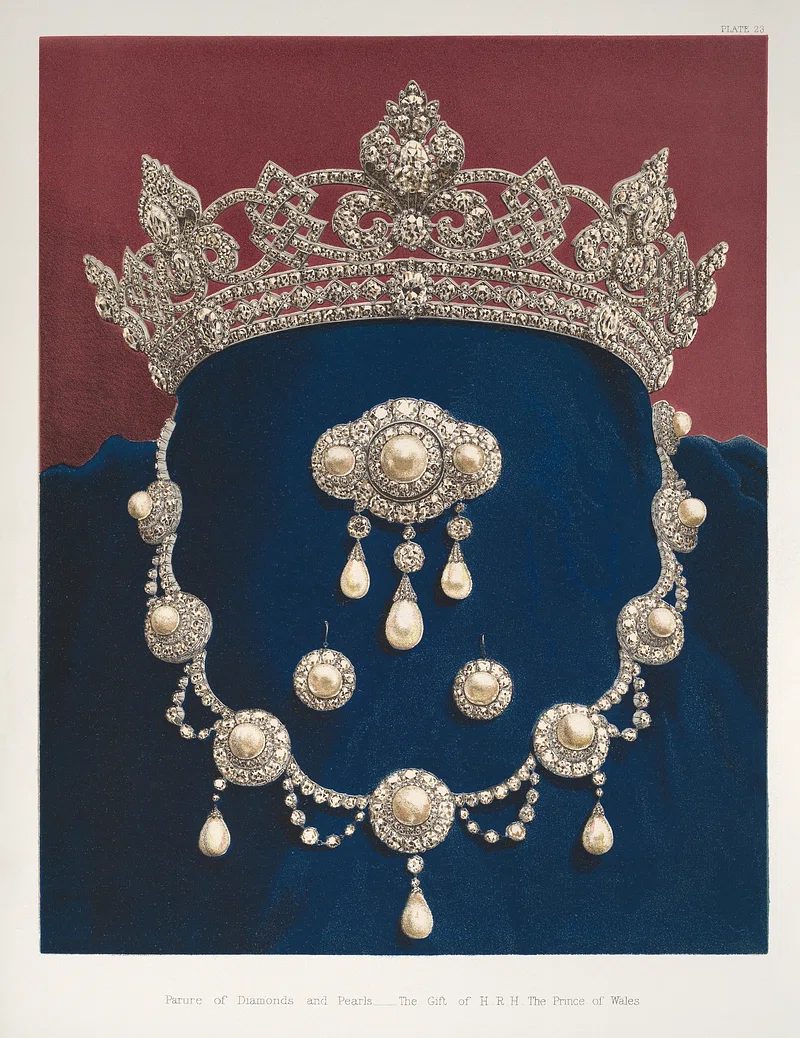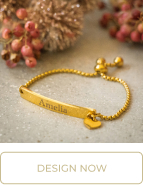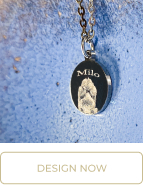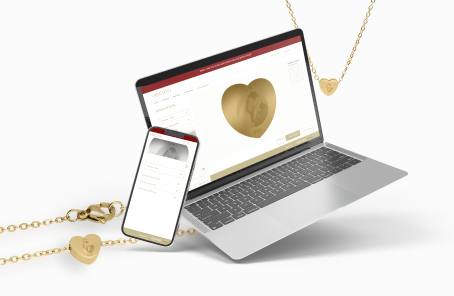Jewelry has accompanied humankind since the dawn of civilization, always serving as an expression of status, beauty, and identity. The history and development of jewelry mirror the cultural, social, and technological advancements of humanity.
In this article, we delve into the various eras and styles that have shaped the evolution of jewelry.

Table of Contents
- Origins and Early Forms of Jewelry
- Jewelry in Antiquity
- Medieval Jewelry
- Baroque and Rococo
- Jewelry in the 19th Century
- Art Deco and Modernism
- Jewelry in the Present Day
- Conclusion
- Frequently Asked Questions
Origins and Early Forms of Jewelry
Jewelry has existed since the earliest human cultures. Archaeological finds prove that shells and bones were worn as adornments as early as 100,000 years ago.
These early forms of jewelry not only served as decoration but often held ritual and symbolic meanings. Over time, more complex designs emerged, incorporating materials like amber, ivory, and gemstones, as evidenced by prehistoric graves.
Jewelry in Antiquity
Jewelry reached new heights in antiquity. The Egyptians, in particular, favored gold and created exquisite pieces for both everyday wear and ritual purposes.
Pharaohs and nobles adorned themselves with magnificent jewelry, often embellished with gemstones like turquoise and lapis lazuli.
The Greeks and Romans also had rich jewelry cultures. The Greeks developed intricate techniques, while the Romans were renowned for their rings and fibulae, which often served as status symbols.
Medieval Jewelry
In the Middle Ages, the function of jewelry changed. Besides adornment, jewelry played a significant role as a valuable commodity and means of exchange.
Religious symbols dominated the jewelry of this era, and it was not uncommon for pieces to be adorned with religious relics or images.
Brooches, rings, and necklaces were widespread, and the jewelry of the time was often richly decorated and held great symbolic value.

Baroque and Rococo
The Baroque period, particularly during the reign of Louis XIV, the “Sun King,” was an era of opulence and excess. Jewelry became larger and more opulent, with elaborate designs often featuring floral patterns and intricate embellishments.
Diamonds and other gemstones became central elements of jewelry pieces, and new cutting techniques like the rose cut were developed .
Jewelry in the 19th Century
The 19th century brought about a democratization of jewelry. With the Industrial Revolution, techniques were developed that allowed for the mass production of jewelry at lower costs.
This made jewelry accessible to the middle class as well. The Victorian era was characterized by sentimental jewelry, often featuring motifs like hearts, flowers, and symbols of love and remembrance.
Art Deco and Modernism
The early 20th century, especially the 1920s, marked the heyday of Art Deco. This style was characterized by geometric shapes, clean lines, and the use of new materials like platinum and Bakelite. Jewelry from this era was often bold and modern, with a strong focus on design and aesthetics.
Modernism also brought numerous innovations to jewelry making, including the use of new materials and techniques.
Jewelry in the Present Day
Today, jewelry is more diverse and accessible than ever before. Modern techniques and materials allow for a wide range of designs, from traditional to avant-garde.
Sustainability and ethics play an increasingly important role in jewelry production, with many designers opting for recycled materials and fair labor practices. Personalization of jewelry has also become a significant trend, with custom engravings and tailored designs in high demand.
Conclusion
The history and development of jewelry is a fascinating reflection of human culture and creativity. From simple shell necklaces in prehistoric times to the highly complex designs of today, jewelry has shown how materials, techniques, and styles have evolved over millennia.
Jewelry remains a significant expression of individuality and culture, and its evolution is sure to continue in the future.
Engraving Jewelry, a timeless choice
Thanks to your creativity and Vecieri’s jewelry configurator, you can create a personalized piece of jewelry just as special as you.
Here’s how to turn your favorite design into a lasting memory:
- Find Your Perfect Piece: Browse our collection and choose the necklace or bracelet that best suits his style.
- Pick Your Design: Choose among all the design options. It can be a picture, a message, or anything you’d like!!
- We Do the Magic: Our whiz-bang tech transforms your design into a high-quality engraving. No need to worry about fancy editing skills, we’ve got it covered.
- See It Before You Get It: Before we engrave your masterpiece, you’ll get a preview to make sure everything looks perfect.
Every set of engraved jewelry tells a unique story, a personal narrative close to the wearer’s heart. Just pick your favourite piece of jewelry and engrave your unique message!






Frequently Asked Questions
What future trends are expected in the jewelry industry? Future trends may include increased sustainability, technological innovations like 3D printing, and further personalization of jewelry.
When was the first jewelry made? The first known jewelry dates back to prehistoric times, around 100,000 years ago, and consisted of shells and bones.
What was the most popular jewelry in ancient Egypt? In ancient Egypt, gold was the preferred material, often combined with gemstones like turquoise and lapis lazuli.
What role did jewelry play in the Middle Ages? In the Middle Ages, jewelry served not only as adornment but also as a valuable commodity and means of exchange.
What are the typical characteristics of Baroque jewelry? Baroque jewelry is known for its opulence, floral patterns, and the use of diamonds and other gemstones.
How did the Industrial Revolution influence jewelry making? The Industrial Revolution enabled mass production of jewelry, making it more affordable and accessible to a wider audience.
What characterizes Art Deco jewelry? Art Deco jewelry is distinguished by its geometric shapes, clean lines, and the use of modern materials.
What materials are commonly used in jewelry making today? Modern jewelry makers use a variety of materials, including precious metals, gemstones, synthetic stones, and sustainable materials.
How has jewelry making changed over time? Jewelry making has evolved from handmade individual pieces to mass-produced items, with an increasing focus on sustainability and ethics.
What is sentimental jewelry? Sentimental jewelry carries emotional significance, often featuring motifs like hearts and flowers, and was particularly popular in the 19th century.
Why is the rose cut special? The rose cut is a historic diamond cut with 32 facets, developed in the Baroque period, known for its special brilliance.
How should antique jewelry be cared for? Antique jewelry should be handled with care, ideally using mild cleaning agents and soft cloths to avoid damaging the materials.
What are the advantages of personalized jewelry? Personalized jewelry offers a unique touch and can gain special significance through engravings or custom designs.
What trends are there in modern jewelry making? Current trends include sustainability, personalization, and the use of innovative materials and techniques.
How has the meaning of jewelry changed throughout history? The meaning of jewelry has evolved from ritual and symbolic functions to a broader expression of fashion, status, and personal style.
